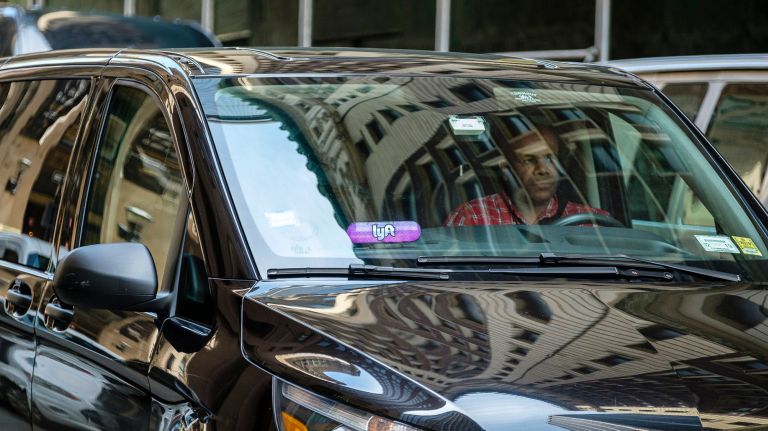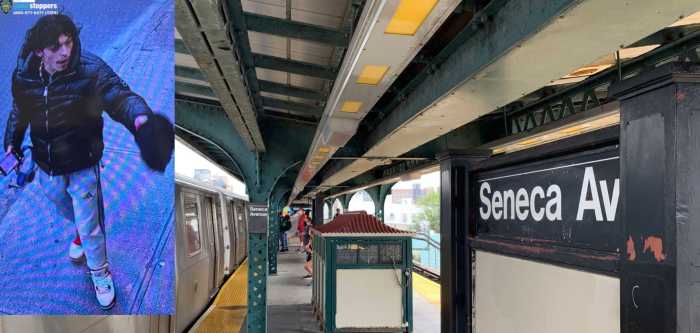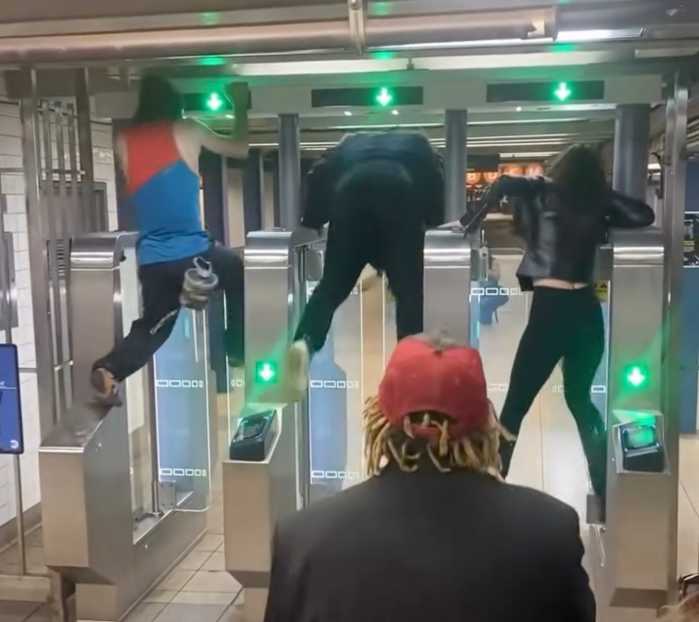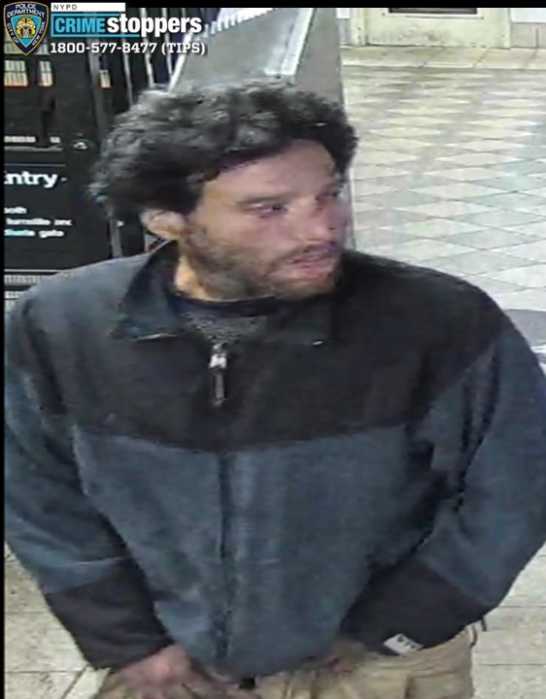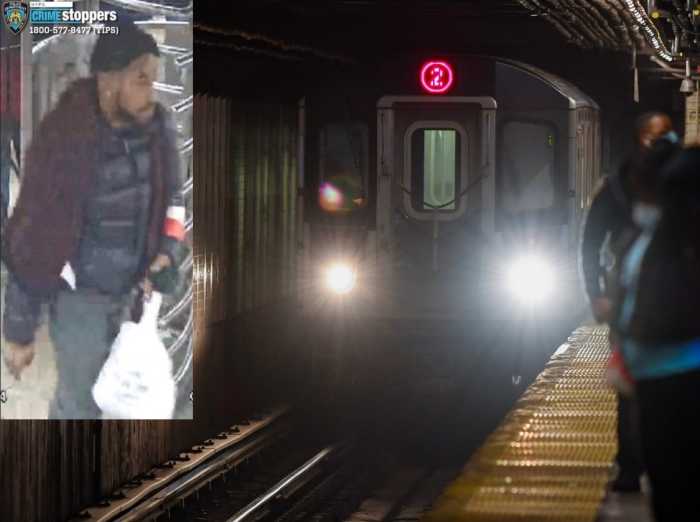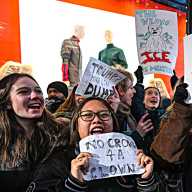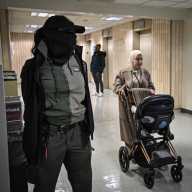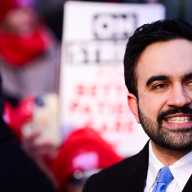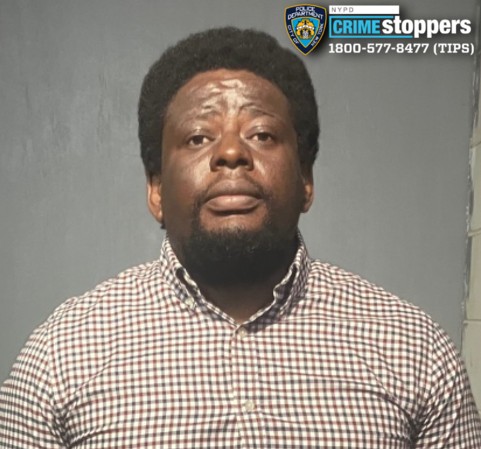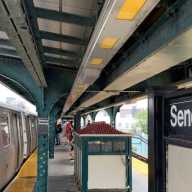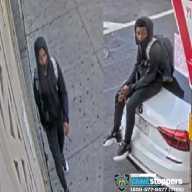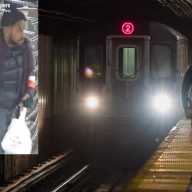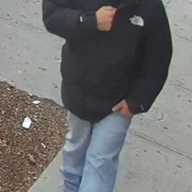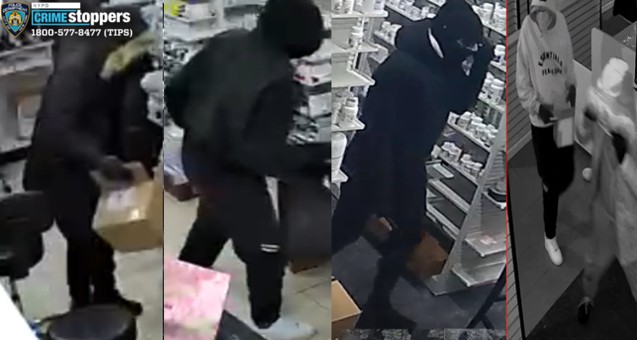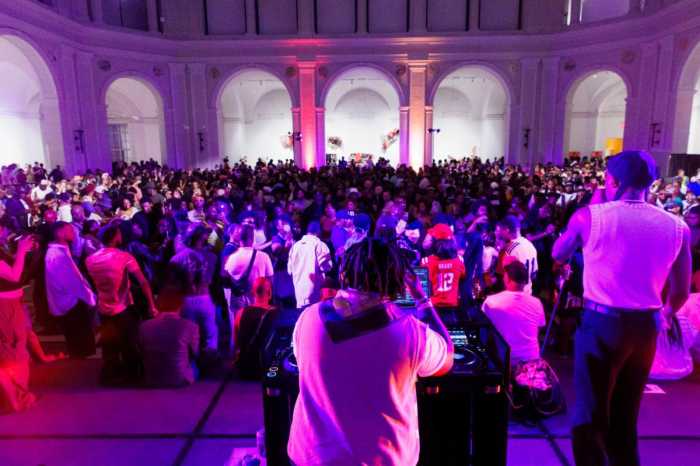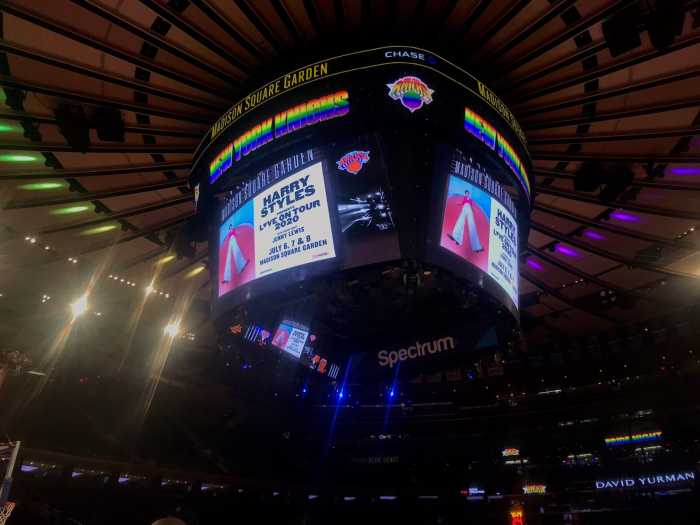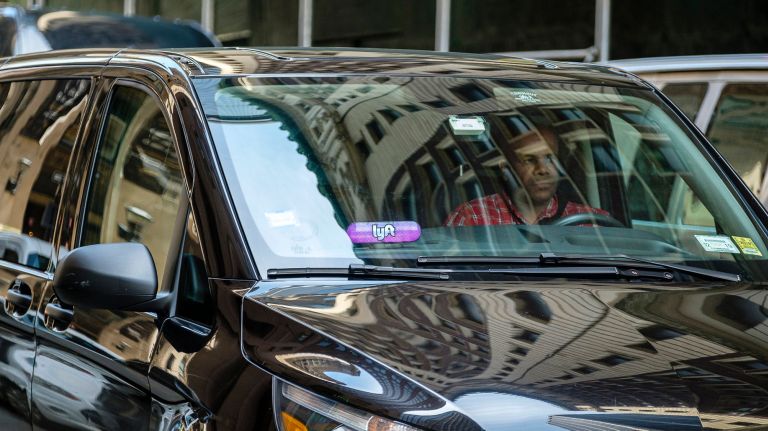
The e-hail cap could carry on.
The city will pursue making permanent its limit on vehicle licenses for companies like Uber and Lyft in an attempt to cut congestion, Mayor Bill de Blasio announced Wednesday. The cap comes alongside a brand-new measure to limit the time e-hail drivers spend cruising around Manhattan’s core without a passenger.
De Blasio argued that the cap helps to rein in an unfair business model that relies on packing the city streets with ride-hails to ensure an high availability of drivers, keeping wait times low. The practice increases congestion and makes it harder for drivers to make a living, he said.
“It was a cynical strategy by these big corporations to flood the streets with so many vehicles,” said de Blasio at a news conference near Bryant Park, “that there was no way they could all be used at the same time to take as much market share as possible no matter what it did to the city, no matter what it did for the workers.”
The City Council passed a temporary cap on e-hail licenses last summer and limits the number of affiliated vehicles at about 86,000. That cap was set to run through August of 2019 as the city studied the impact the swift increase of e-hail vehicles had on slowing traffic speeds. The limitation on vehicle licenses was the first of its kind in the country and was viewed as a victory for local governments looking to further regulate ride-hailing companies.
More than 10,000 e-hail vehicles have rolled out onto city streets each year since 2014, according to city data. Those vehicles now make up 29% of the traffic in Manhattan below 60th Street, 22% of vehicles on the city’s East River bridges, and 24% of the traffic in both the Downtown Brooklyn and Long Island City neighborhoods, according to a city study conducted in the fall of 2018.
The growth of ride-hailing services was "really something we thought was absolutely unsustainable moving forward,” said Deputy Mayor Laura Anglin, during a City Hall briefing with reporters before the announcement. By comparison, there are roughly 13,500 yellow taxis on the streets, as well as roughly another 3,500 green cabs.
A cruising cap could further congestion goals, according to Anglin. Ride-hail vehicles currently travel around the city without passengers 41% of the time, according to the city. Through a forthcoming rule, the ride-hail companies would be forced to drop that rate down to 31% for trips taking place in Manhattan below 96th Street.
The city plans to ensure companies meet those new limits by issuing penalties or suspending and revoking company licenses to operate in New York.
Both caps are expected to go through the Taxi & Limousine Commission’s rule-making process over the summer, with the new regulations to take effect no later than Aug. 14. Companies will have some time to comply with the cruising limits: They will have to decrease cruising to 36% by February and reach the 31% by August 2020.
With the two measures together, the city hopes to speed up Manhattan traffic in the evening rush hour by up to 10%, while also increasing driver earnings citywide by as much as 20%.
Uber has already forcefully opposed the measures. A company spokeswoman argued that the cap would create a secondary, predatory leasing market for licensed professional drivers who cannot bring their own cars onto the road — a structure similar to the yellow cab industry, which is limited by the number of vehicle medallions the city issues.
“The mayor’s cap will create another medallion system — the same kind that bankrupted drivers and enriched lenders,” said Alix Anfang, a spokeswoman for Uber. “Not only is the mayor’s policy hurting app drivers by forcing them to pay exorbitant fees to rent a car, but he has proposed nothing to fix the current medallion system that only benefits lenders and taxi insiders.”
The city said such fears were wildly misleading. The e-hail licenses, unlike taxi medallions, are nontransferable, meaning such a predatory market couldn’t form, Anglin said.
“They’re saying things that are clearly not true and trying to scare people and get people to believe that this is a bad policy,” Anglin said. “And it’s unfortunate, but I don’t expect anything more from them.”
The regulations are closely tied to a new driver minimum wage, which in January set a $17.22 base pay for drivers, after expenses. The city utilizes a formula for minimum pay rates that factors in cruising time to incentivize companies to keep drivers busy moving passengers.
Bruce Schaller, a transportation consultant and former worker at the city’s Department of Transportation, hailed the minimum pay regulation as well as the new cap on cruising. But he too expressed concerns over a potential new subleasing market.
“The good news is the cruising restrictions will be really beneficial to congestion in Manhattan. (The) extending of the vehicle cap could have unintended consequences … of drivers leasing out their vehicles without much of a benefit. I think you can get what you want with the (cruising) mandate and driver earning rules, which is already in effect.”
Bhairavi Desai, the president of the New York Taxi Workers Alliance, which represents taxi and e-hail drivers and is typically dogmatic with Uber, said the cap helps address a “race to the bottom” in the industry. She doesn’t envision e-hail drivers subleasing their vehicles.
“The industry doesn’t work that way,” she said. “Because drivers on the [e-hail] side pay for all the vehicle’s expenses, they prefer to be the only driver on that car and not rack up more wear and tear. And the way business works, you tend to cover both rush hours, which is harder to do if you’re double shifting.”



